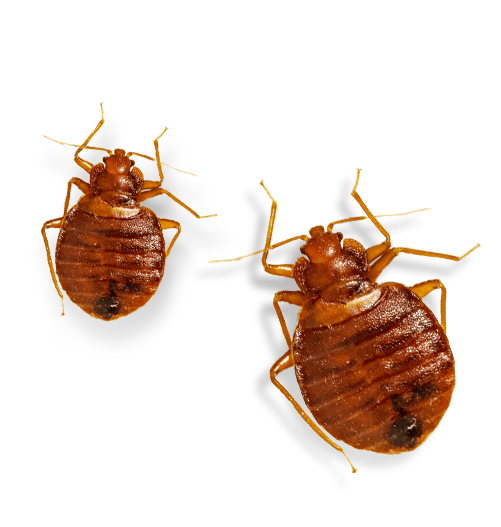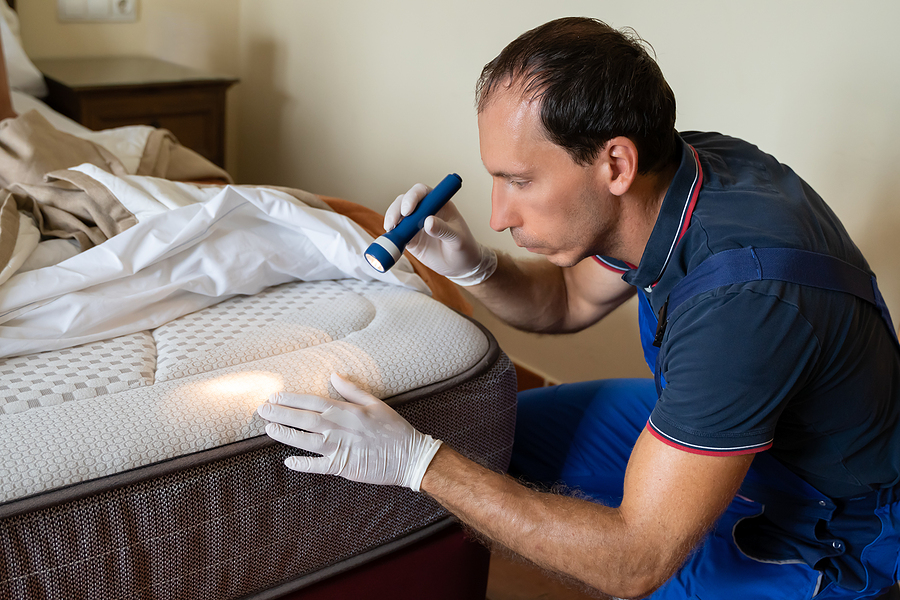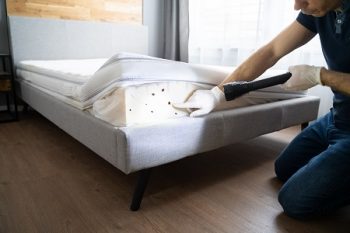Bug Control Provider Demystified: The Science Behind Getting Rid Of Insects and bugs
Parasite control solutions play a critical role in preserving the health and safety and security of our living and workplace. Behind the seemingly regular task of removing parasites exists a fascinating world of scientific principles and methodologies that drive the process of insect administration. From recognizing the detailed actions patterns of pests to employing sophisticated modern technologies for their eradication, the realm of pest control operates a foundation of knowledge that extends much past merely exterminating unwanted trespassers. As we check out the elaborate science behind bug elimination, we discover a world where chemistry, biology, and innovation merge to deal with these durable enemies.
Parasite Actions Evaluation
Analyzing pest habits is important in creating effective insect control methods for both business and residential settings. By comprehending the routines and patterns of bugs, parasite control specialists can implement targeted and reliable remedies to get rid of invasions.
Furthermore, studying insect behavior aids in identifying the most suitable methods of insect control. Different insects may require different methods, such as baiting, trapping, or chemical treatments. Recognizing that a specific type of parasite is largely energetic at night can aid in scheduling treatments for optimum efficiency. On the whole, an extensive analysis of pest actions is crucial for creating personalized pest management plans that are both eco-friendly and highly effective.
Integrated Pest Administration Techniques
Integrated Bug Management Strategies include comprehensive methods that make use of a combination of safety nets, organic controls, and monitoring to properly handle bug populations. Precautionary actions aim to get rid of variables that draw in insects, such as food and water resources, by executing appropriate hygiene practices. This includes sealing holes and splits, taking care of leakages, and keeping food in airtight containers. Organic controls entail presenting natural predators or parasites to control pest populaces, minimizing the requirement for chemical pesticides. Launching ladybugs to prey on aphids in a garden is an usual biological control approach. Tracking plays a critical duty in Integrated Pest Management by on a regular basis examining and recognizing pest populations to determine the most ideal control methods. By using a mix of these strategies, parasite control solutions can lessen the ecological impact of parasite administration while properly reducing pest populations in a lasting fashion.
Eco-Friendly Parasite Control Solutions
With a concentrate on sustainability and environmental consciousness, green pest control options offer a all-natural and reliable alternative to traditional chemical pesticides. These methods prioritize using non-toxic active ingredients originated from plants, minerals, or other organic resources to battle insect infestations without triggering damage to the atmosphere, human beings, or non-targeted species.
One popular eco-friendly strategy is organic insect control, which entails presenting all-natural predators, bloodsuckers, or pathogens to take care of insect populaces. By harnessing the power of nature's own checks and equilibriums, this approach can efficiently regulate parasites without the requirement for hazardous chemicals. Additionally, organic chemicals stemmed from plants like neem, pyrethrum, and garlic have revealed promise in driving away or eliminating cockroach pest control insects while remaining risk-free for useful bugs and pets.
In addition, environmentally friendly insect control solutions usually focus on preventative measures such as securing entry factors, removing food and water sources, and preserving proper sanitation to deter pests from infesting structures. By integrating these sustainable techniques, bug control services can properly remove pests while minimizing environmental effect.

Function of Technology in Insect Removal
Modern innovations in innovation have changed the area of insect removal, enhancing the effectiveness and effectiveness of pest control services. The combination of innovation in bug administration has significantly boosted the accuracy of parasite detection, allowing for targeted therapy approaches. One of the vital technological devices in bug control is using remote tracking gadgets, such as sensors and video cameras, which aid in identifying bug hotspots and monitoring pest activities. These devices give real-time information, allowing insect control specialists to make educated choices rapidly.
Moreover, the advancement of environment-friendly pesticides and baits that are a lot more targeted towards certain pests has been made possible with technical improvements. This targeted technique reduces the overall use chemicals, decreasing environmental impact while successfully managing pest populaces. Additionally, the usage of drones for aerial studies and targeted pesticide application in hard-to-reach locations has streamlined bug control operations.

Significance of Normal Parasite Inspections
Routine parasite examinations are essential for keeping a pest-free atmosphere and protecting against problems from holding - philly Clicking Here best pest control philadelphia bed bugs. By carrying out routine inspections, home owners can spot parasite problems at an early stage, permitting swift and targeted treatments to get rid of the pests before they replicate and spread. These examinations provide a possibility to recognize possible entrance factors where bugs can infiltrate the properties, enabling proactive procedures to seal off these access factors and avoid future infestations
Additionally, routine insect inspections can aid protect the health and safety of owners by making sure that the environment stays without disease-carrying pests and allergens. Early detection of pests like rats, roaches, or bed bugs can prevent health and wellness dangers connected with their presence, such as allergic responses, contamination of food and water resources, or the transmission of illness.
Along with securing human health, routine bug evaluations are important for preserving the architectural honesty of structures. Specific pests, such as termites, can trigger substantial damage to wooden frameworks if left untreated. With regular evaluations, building owners can identify termite infestations early and apply actions to avoid expensive structural repairs.
Verdict

Analyzing pest actions is important in developing reliable insect control approaches for both property and commercial setups.Integrated Parasite Administration Techniques include comprehensive methods that utilize a combination of preventative steps, organic controls, and keeping an eye on to effectively handle parasite populaces. By using a combination of these techniques, bug control services can minimize the ecological impact of bug monitoring while efficiently lowering pest populations in a lasting fashion.
One of the key technological devices in insect control is the usage of remote monitoring devices, such as sensors and video cameras, which assist in determining parasite hotspots and monitoring pest motions (philly exterminator philadelphia pa bed bugs).In verdict, understanding bug habits, implementing integrated bug administration strategies, using environment-friendly options, including modern technology, and performing normal assessments are essential elements in effectively eliminating pests